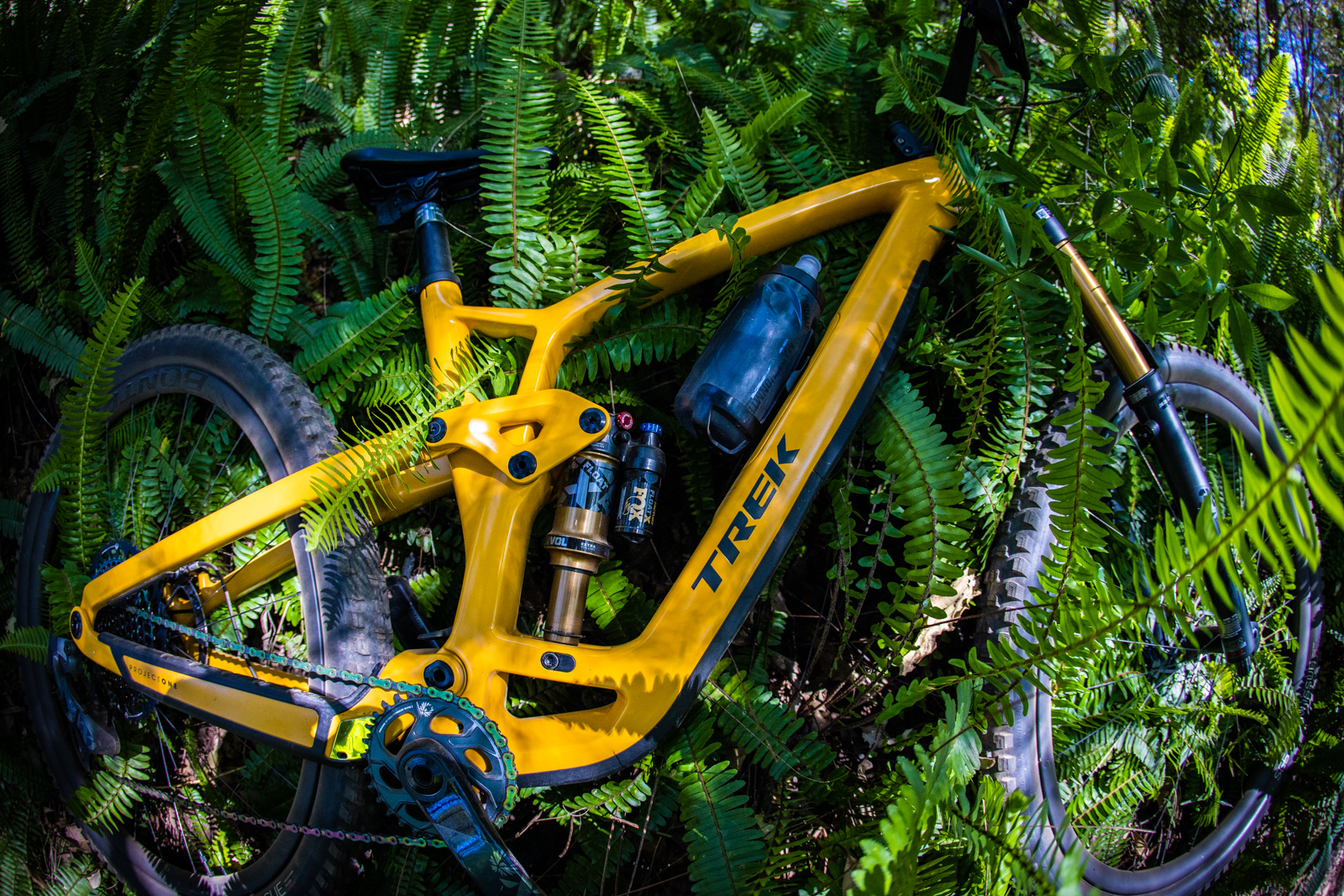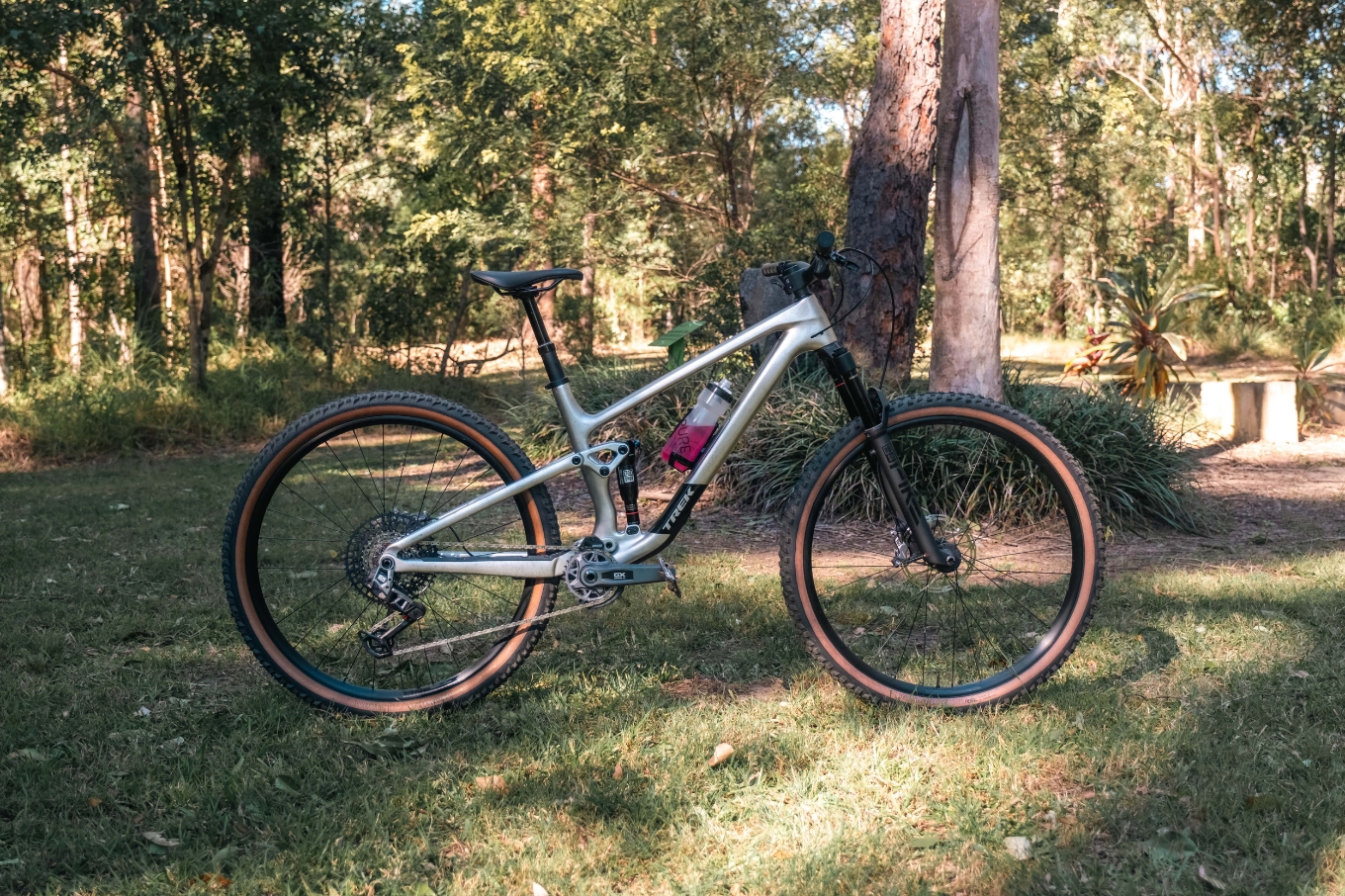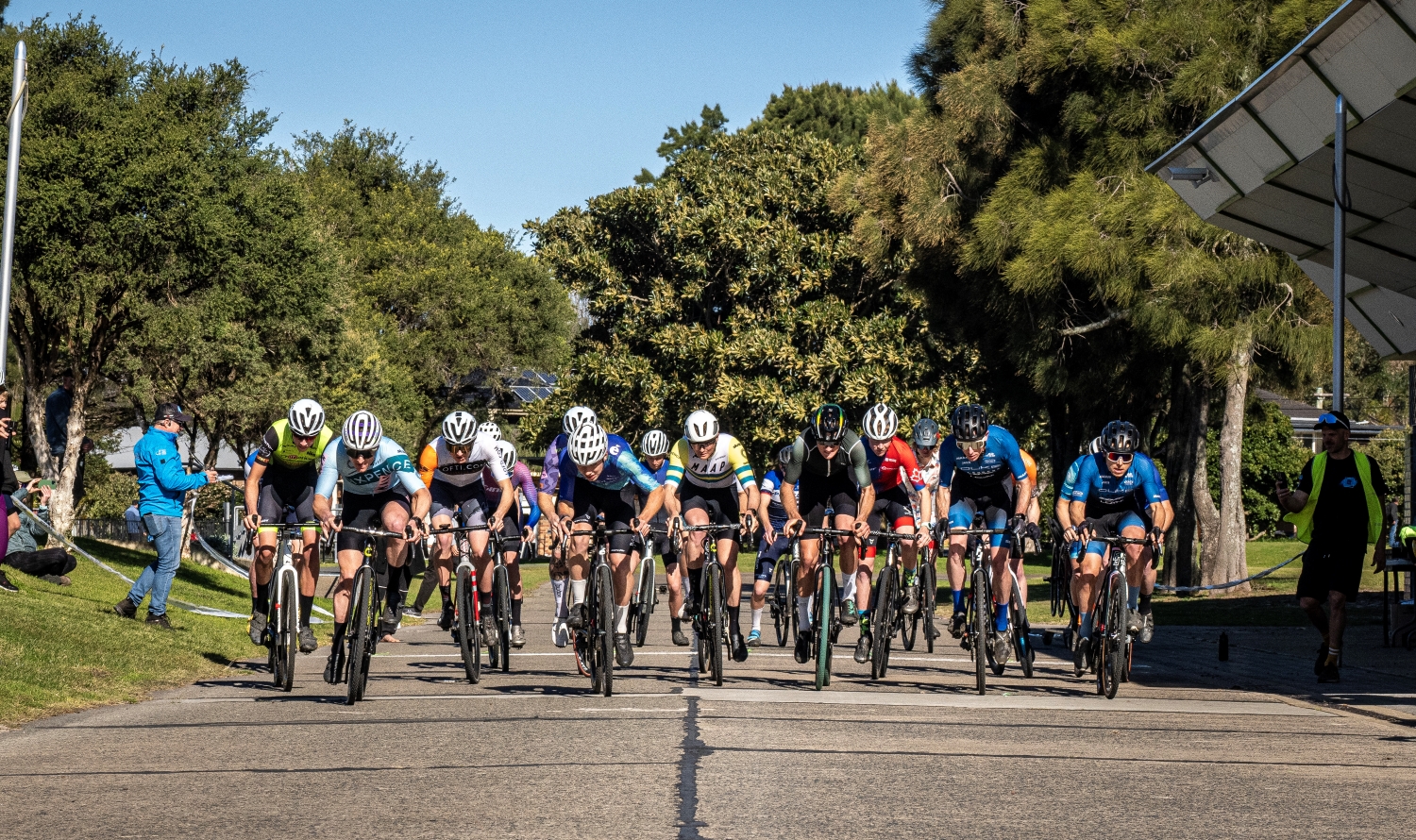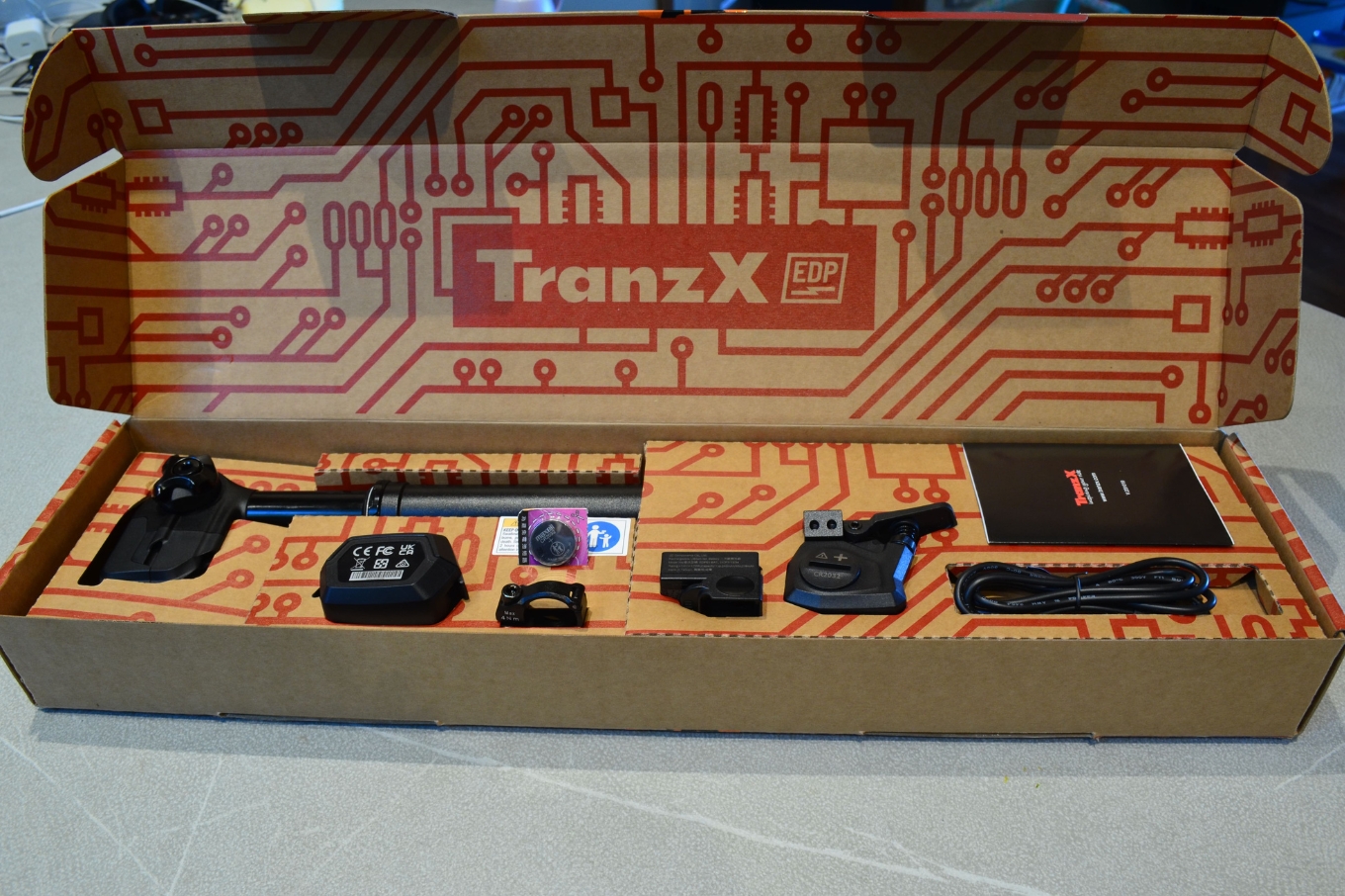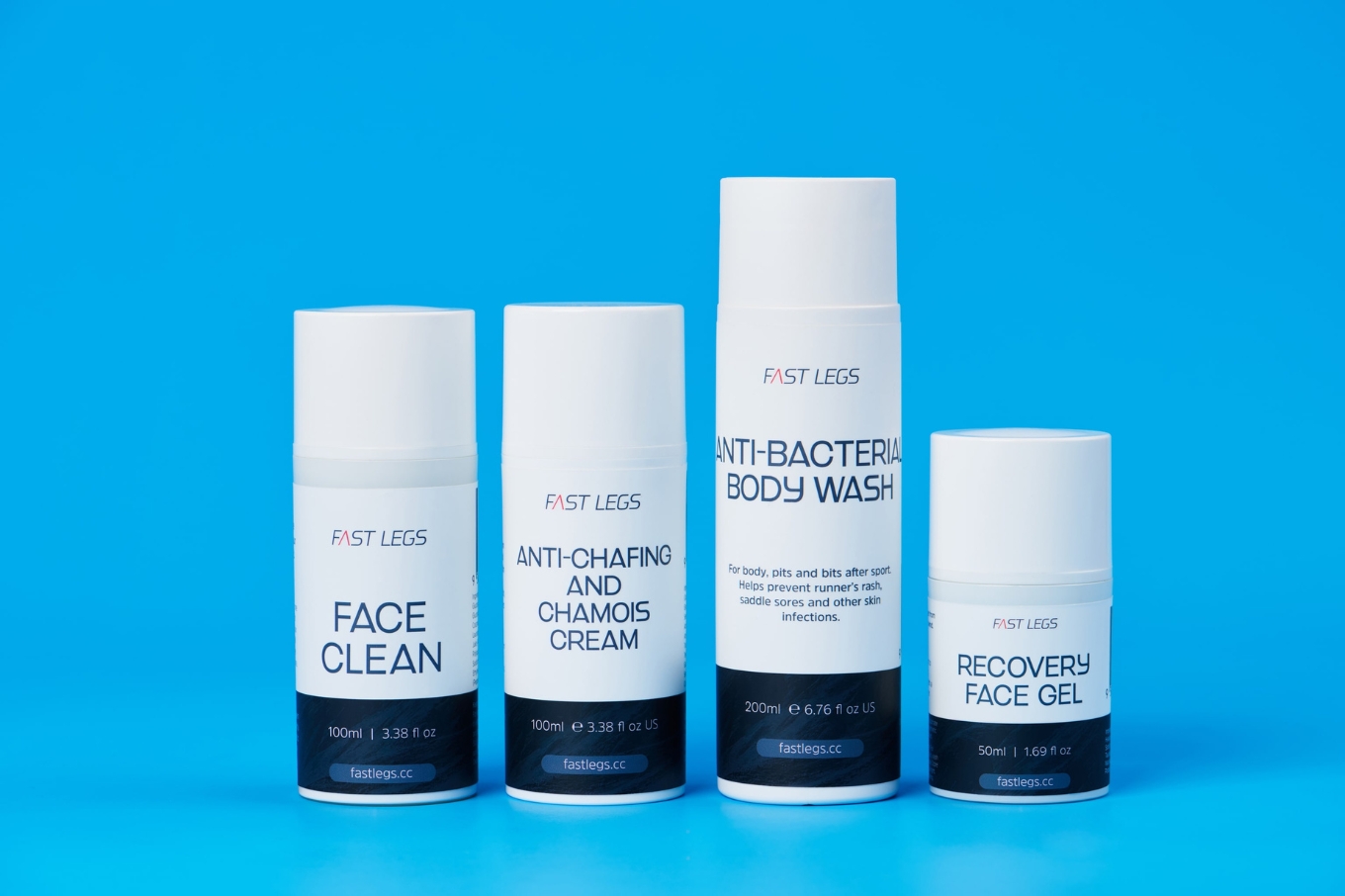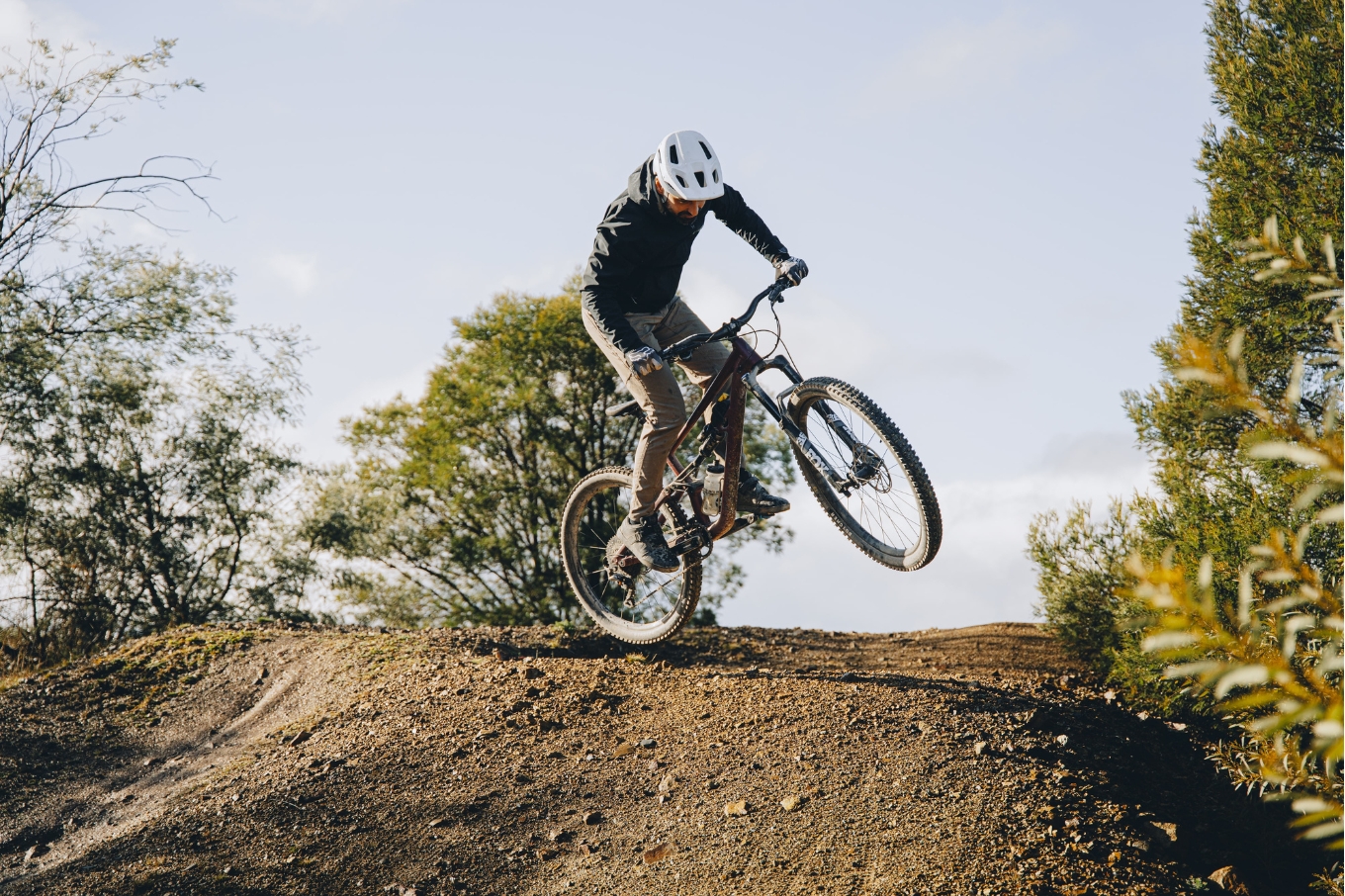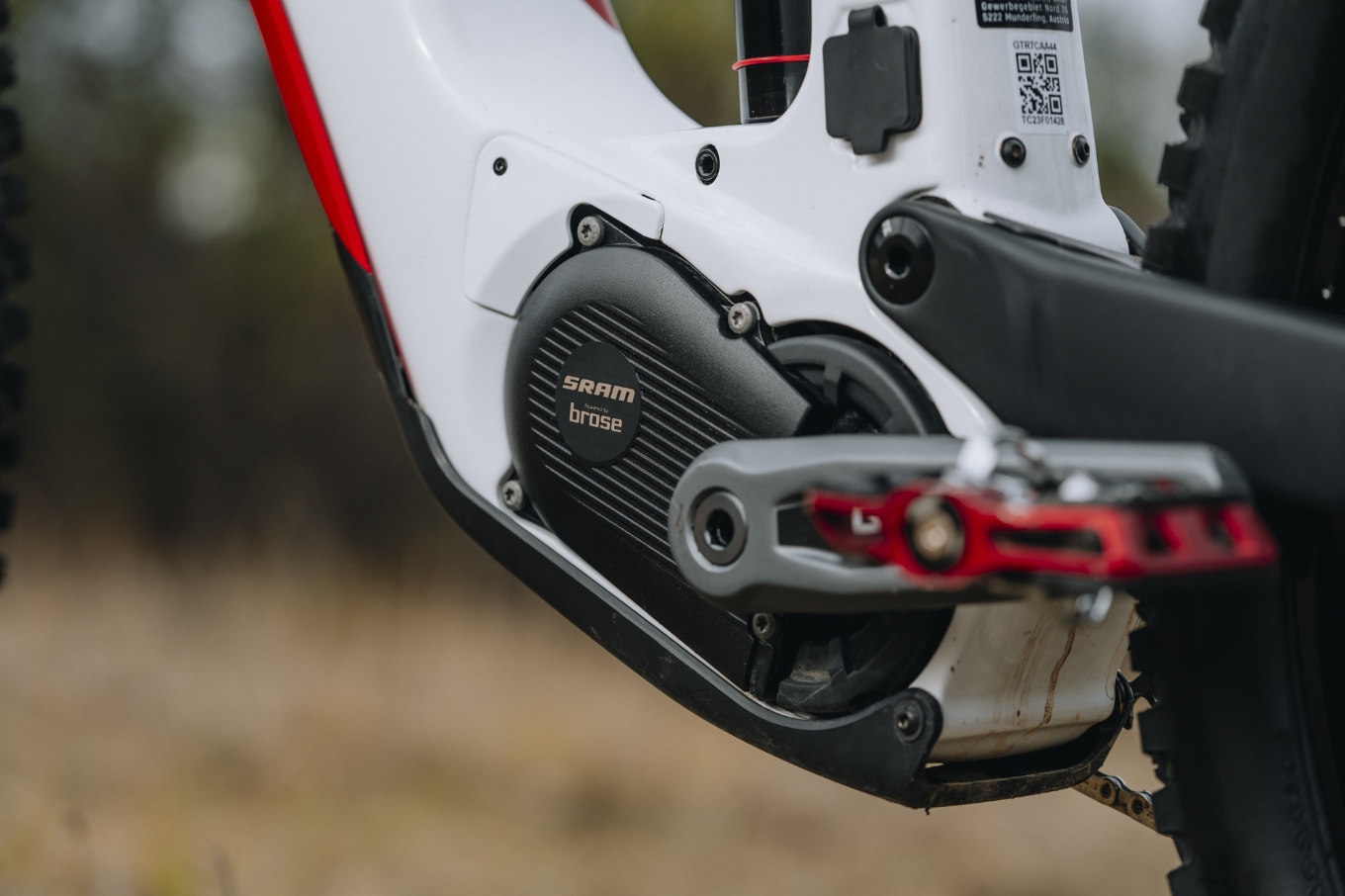TESTED: Trek Fuel EX 9.9 AXS
In the past 3 years the Top Fuel morphed into a downcountry bike that rivals the Fuel EX for capability, and so the Fuel EX needed to grow up as mountain biking has evolved.
Photographer: Gerard Lagana Tester: Mike Blewitt
In the middle of 2022, Trek revealed what everyone knew must be in the works – a brand-new Fuel EX trail bike. Following on from the popular Trek Fuel EXe mid-power, light weight eMTB, the Fuel EX illustrated that they didn't just update the popular platform – they completely redesigned it. Sitting side by side a Fuel EXe, the two bikes share the same silhouette, with a noticeably long frame, dropped top tube for plenty of standover height. Clearly they came through a similar design process, but their bikes do have very different characters.

The Fuel EX has been a popular bike amongst all AMB crew for years. It was a mountain bike you could jump on and go ride trails, tackle a fun XC event, and happily recommend to a friend as a place to look for their first do-it-all mountain bike when they wanted to explore the world of dirt. The Fuel EX was an extension of the Fuel – a no compromise cross-country racing bike. In the past 3 years the Top Fuel morphed into a downcountry bike that rivals the Fuel EX for capability, and so the Fuel EX needed to grow up as mountain biking has evolved.
To that end, the new Fuel EX for 2023 has bumped up travel to 150mm travel forks with 140mm in the rear. The frame is far burlier, with geometry that puts it to the head of the class for a modern trail bike. Trek have engineered frame storage in both the alloy and carbon frames, and designed adjustable geometry headsets to partner with an updated MinoLink for lots of geometry adjustment. Throw in two shock mounting options to change how progressive the suspension is, and to cater for a coil shock, and the new Trek Fuel EX is not just more customisable than anything in Trek's range – but it's wildly more capable than the outgoing Trek Fuel EX.
The new 2023 Trek Fuel EX is available in alloy and carbon models, starting at $5199 and going up to $9199. There are up to 8 sizes available depending on the model, and they used a mixed wheel size, with 27.5” wheels on the smallest two sizes and 29” on the larger sizes. You can set any of the Fuel EX models up as a mullet, even with a 160mm fork, by using the MinoLink in the high setting.
Trek state that the new Fuel EX is the 'jack of all trades, master of fun'. It's a nice play on words, but clearly they know they have made a highly capable and versatile bike, and one that is a blast to ride. I was sent a Trek Fuel EX 9.9 AXS to review, this model is not available in Australia currently, but uses the exact same frame as any of the carbon Fuel EX models, with all the same features and geometry options as the whole range.
First impressions
Let's be clear, I really liked the outgoing Fuel EX. As a staunchly grounded rider, I liked the 130mm platform that pedalled really well and made for a good partner on a wide variety of trails. One of the best rides I had was at a Trek press launch in Verbier, riding with another journalist and two guides on the trails 'that aren't really marked on the bike park map' as one of our guides explained in a heavy French accent. We rode some amazing natural trails on steep slopes, with no one around. It was a very good day.
That was five years ago, and mountain biking has continued to progress at a rate of knots since then. The trails we ride have more committing features, our suspension is more capable, and the skill set of some riders has moved to a level many would not have predicted a decade ago. New bikes are in part enabling this progression, and also forced to adapt to it. And that is exactly what has happened with the new Fuel EX. It looks to have lots of versatility and capability as before, but it's been shunted into the modern day, and right to the front as well.
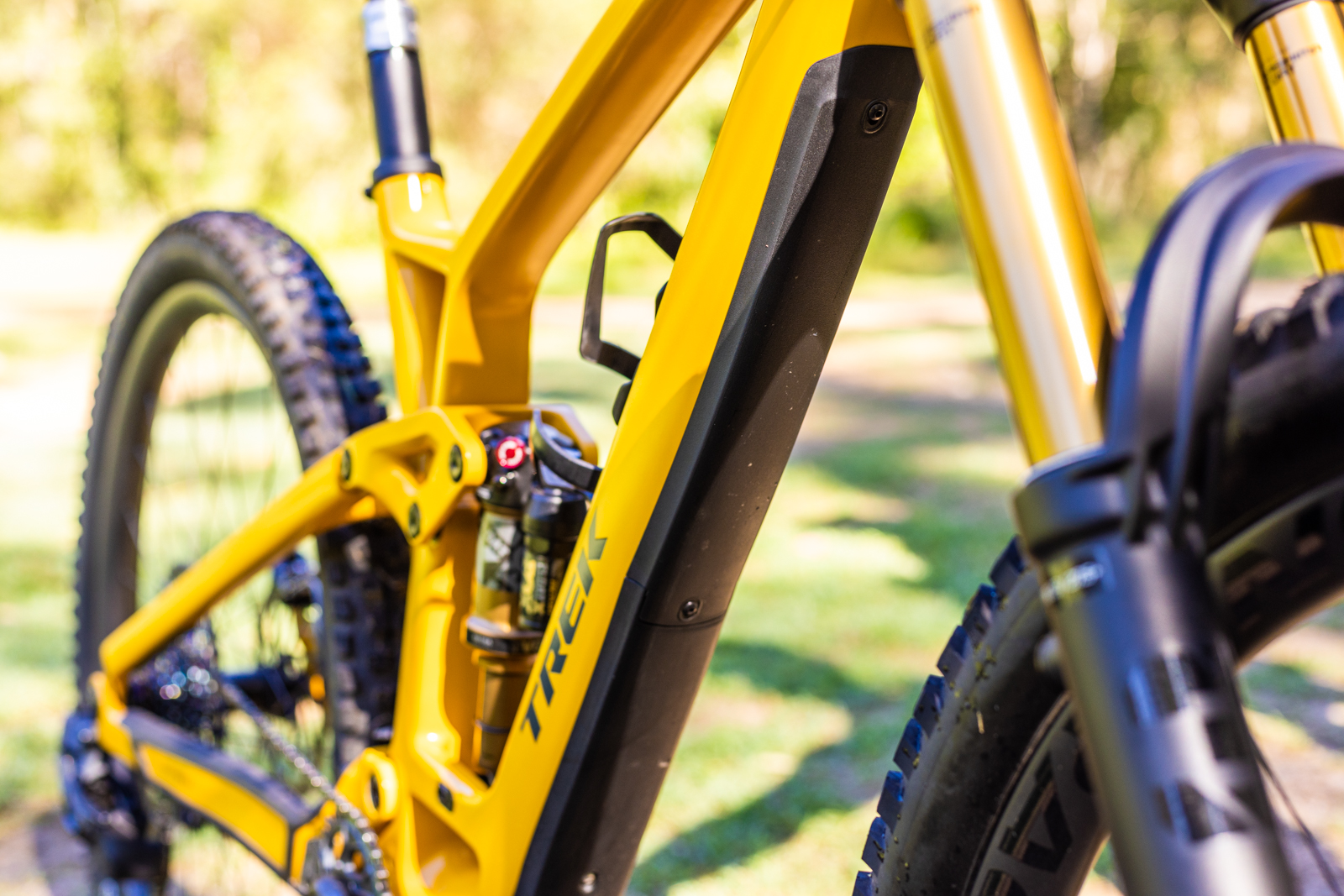
The frame is noticeably much burlier, and the scales show that as well, with my test bike clocking almost 14.5kg before I fitted pedals. For a bike with a light AXS XX1 drive train, carbon bars and wheels, that does mean there is a lot more material in the frame. The downtube is huge, with a two piece removable roost guard, and internal frame storage that I could fit a thermoplastic tube, lever and CO2 in. My test bike came with the Bontrager BITS tool in the steerer, which is a handy addition to work with the frame storage.
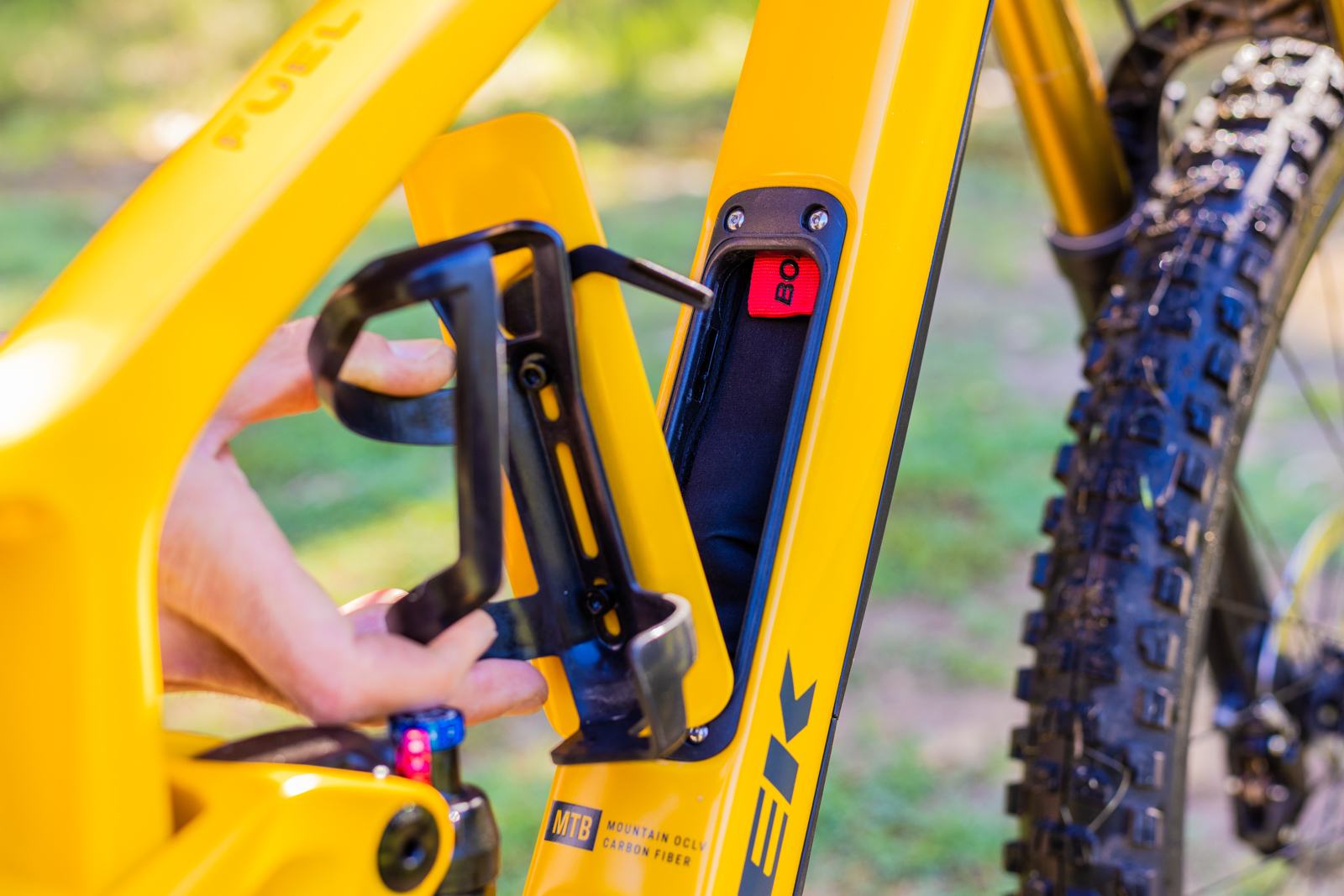
Trek spec a 64.5 degree head angle, and the large has a 77.2 degree effective seat angle and 485mm reach in the shipped geometry settings. The chain stay is 440mm long on a large, and these are size specific, to keep the fit and bike's handling similar across the size range. You'' see that the effective seat angle also changes with sizes to adapt for riders of different heights. Trek have a 38mm bottom bracket drop in the 29” wheel frame sizes, which is a little more than on the outgoing Fuel EX. Of course, you can flip the MinoLink to gain about 8mm bottom bracket height and steepen the angles by about half a degree if you like.
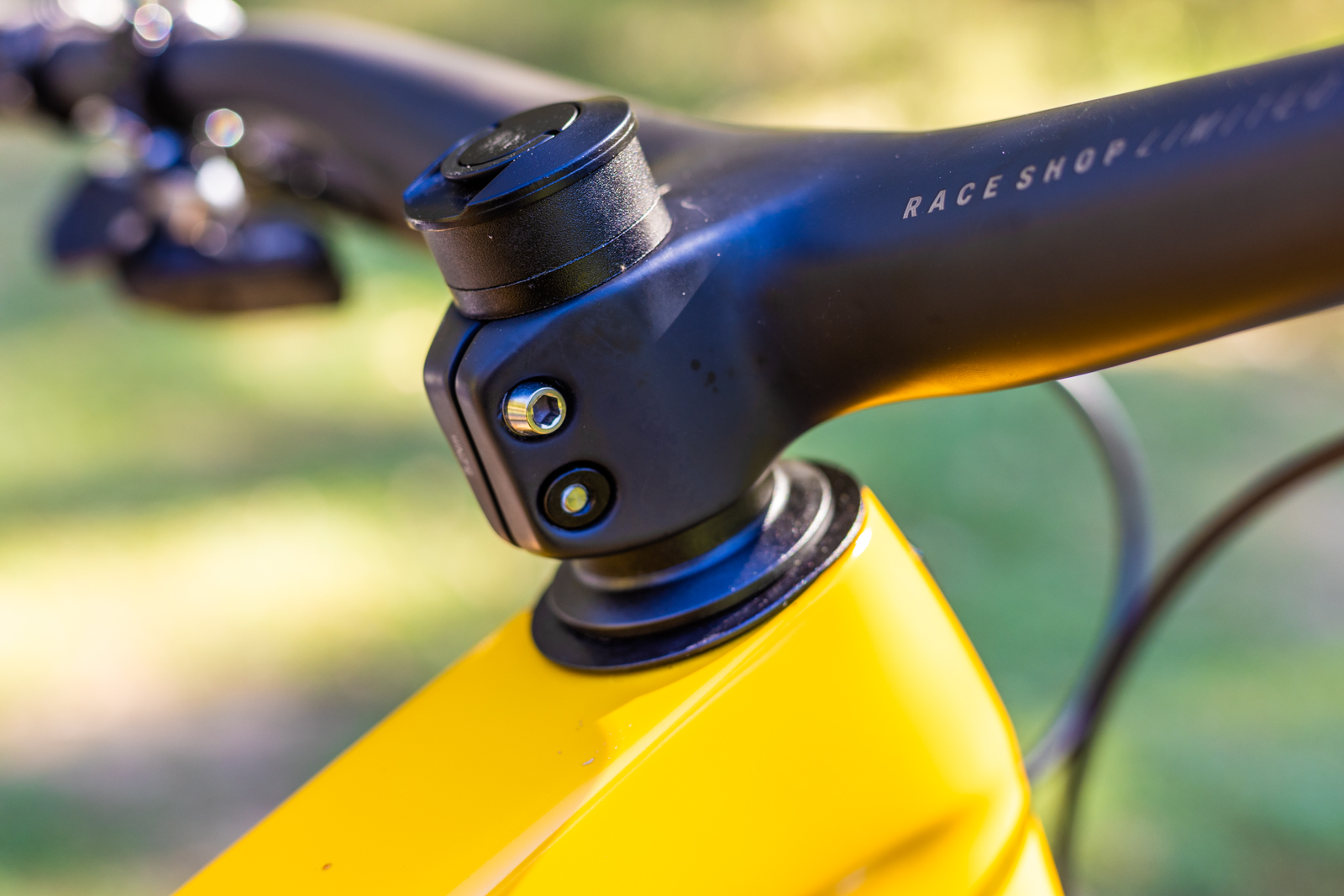
The swing arm has plenty of chain slap protection and a plate to protect it from a dropped chain, plus it moves on a burly pivot. Trek have a threaded bottom bracket shell and there are bolts for a chain guide if you want to add a little more insurance to chain stability on your ride. The seat tube is 34.9mm, which allows for a more reliable longer dropper post, and aids overall frame stiffness.
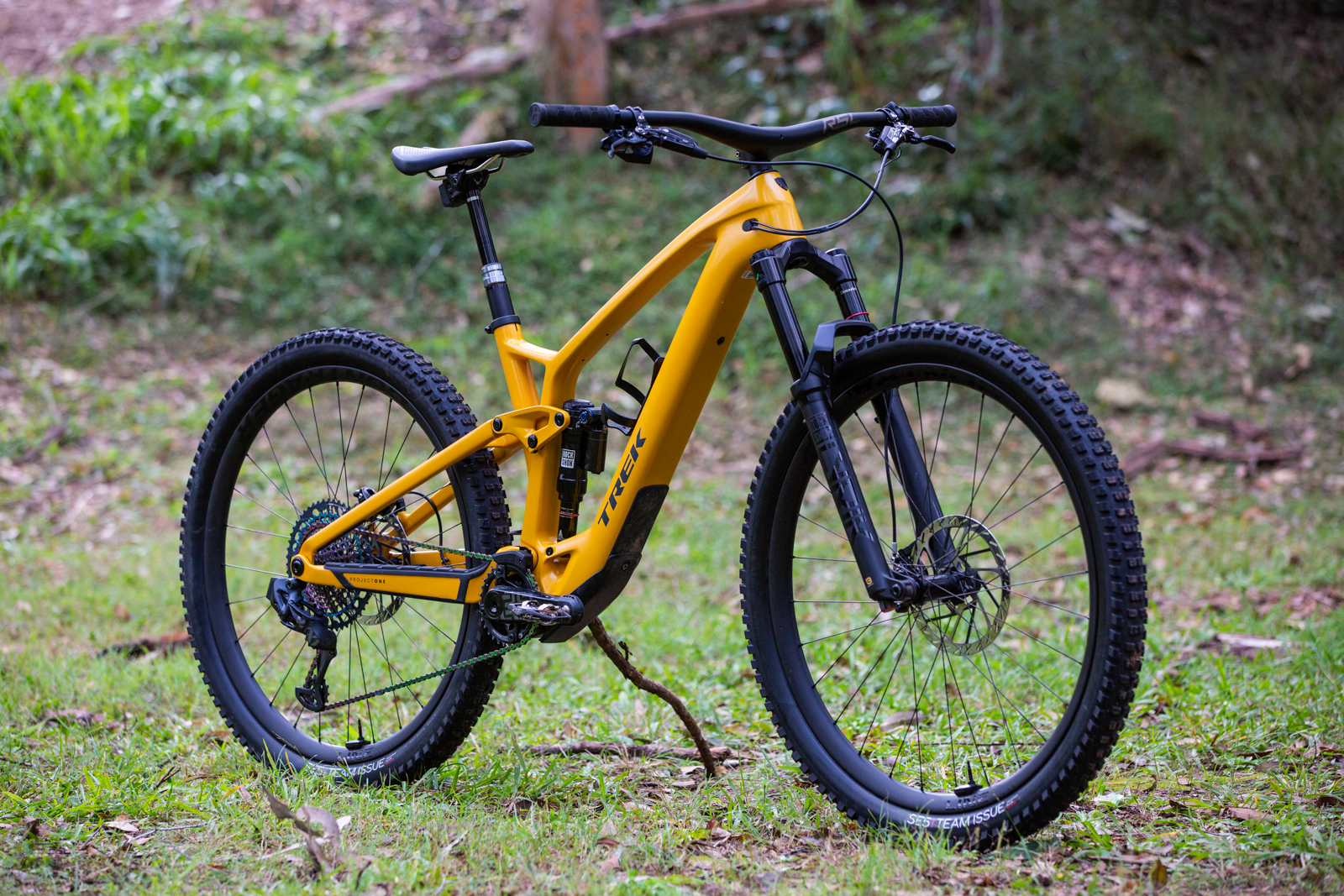
I used Trek's suggested setup from the get go for my weight. That saw the tyres at 21/23 psi, with 78 psi in the fork and 169psi in the rear. This was in the stock settings with the MinoLink Low, neutral head angle and the Less setting on the lower shock mount. Rebound was about 6 out front and rear, a little faster for the low speed rebound on the fork.
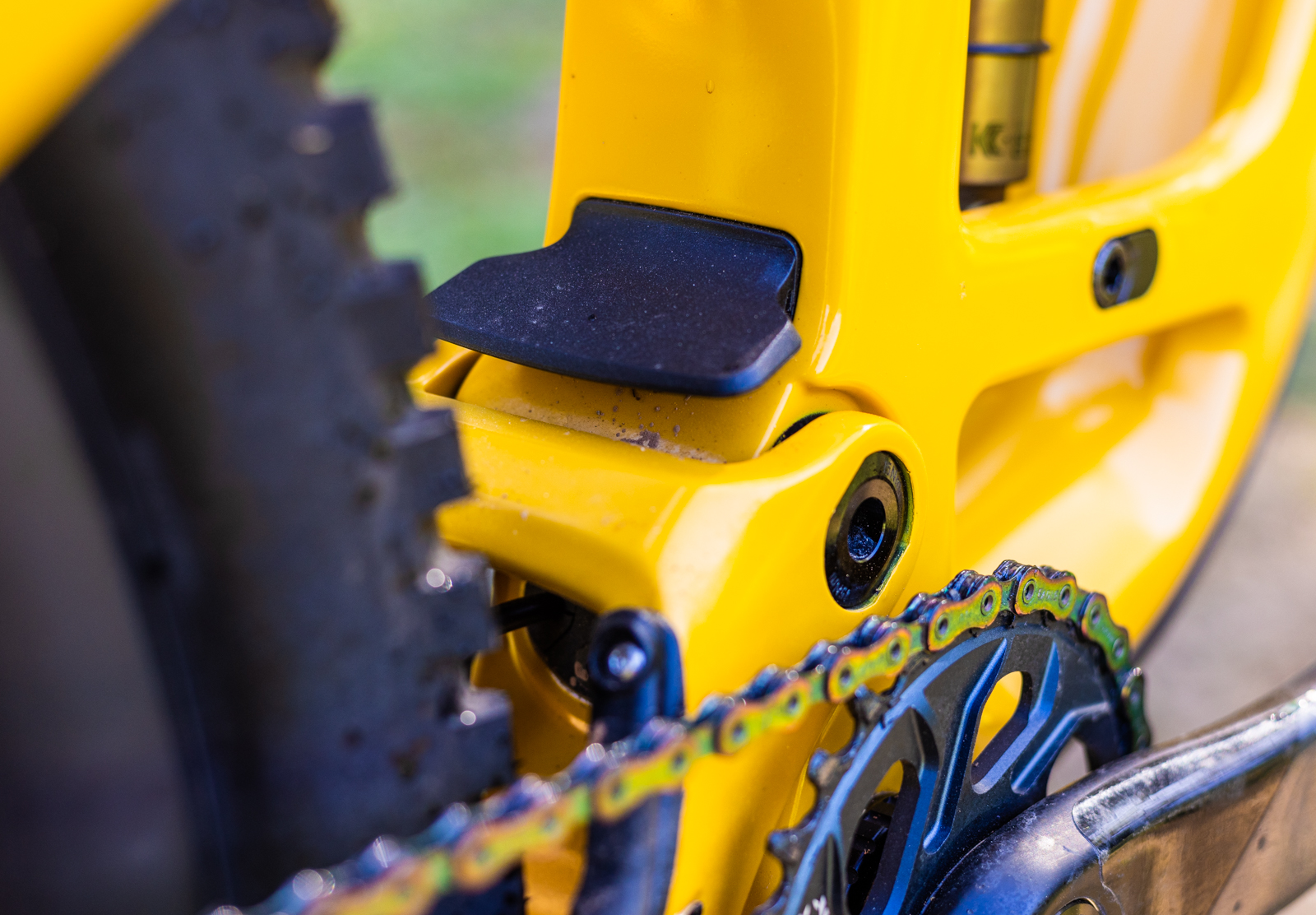
On the trail
I'll admit it had been a while since I'd ridden the previous Fuel EX, but the 2023 model took to the trail like a completely different bike. Pedalling out of the carpark I expected to reach for the climb switch but saw little need on the first singletrack climb. While the new geometry is much longer and slacker, the much steeper seat angle keeps the bike balanced, and the first climb out of the carpark was pleasant, despite a being onboard a bike that was only a few kilos lighter than it's eMTB sibling but with zero assistance.
As my ride went on I was really impressed with how the Fuel EX pedalled, it had less movement than my XC bike ridden fully open, and even getting out of the saddle on a pinch it was very stable. It is also worth noting that it's not a super plush magic carpet ride when dawdling up climbs and on the flat, the bike has been designed to be ridden harder than the outgoing model. To this end, I did find the front end pushed wide in some climbing switchbacks without a firm hand, and that's to be expected with a slacker 64.5 degree head angle. Newer trails that have been built with modern bikes in mind as a climbing trail were no issue, just some older and tighter trails needed a little more direction – attack the corner and it's a blast.

The first descent I hit is one I use a lot for product tests. It's short, you pedal in, crest a rise and enter a chute fairly quick, before exiting on some minor step downs and a series of corners. It's a rapidfire way to get used to a bike and I always see how late I can wait until pulling the fear levers. Like the Fuel EXe, the Fuel EX was ultra stable at speed, but with a bit less weight behind it I did find I bounced around the tiniest bit more. The Fuel EX is no light weight trail rig but the frame is built for whatever you want to throw at it, and this means it's stiff over rocks. At speed though, the bike sure does come alive.
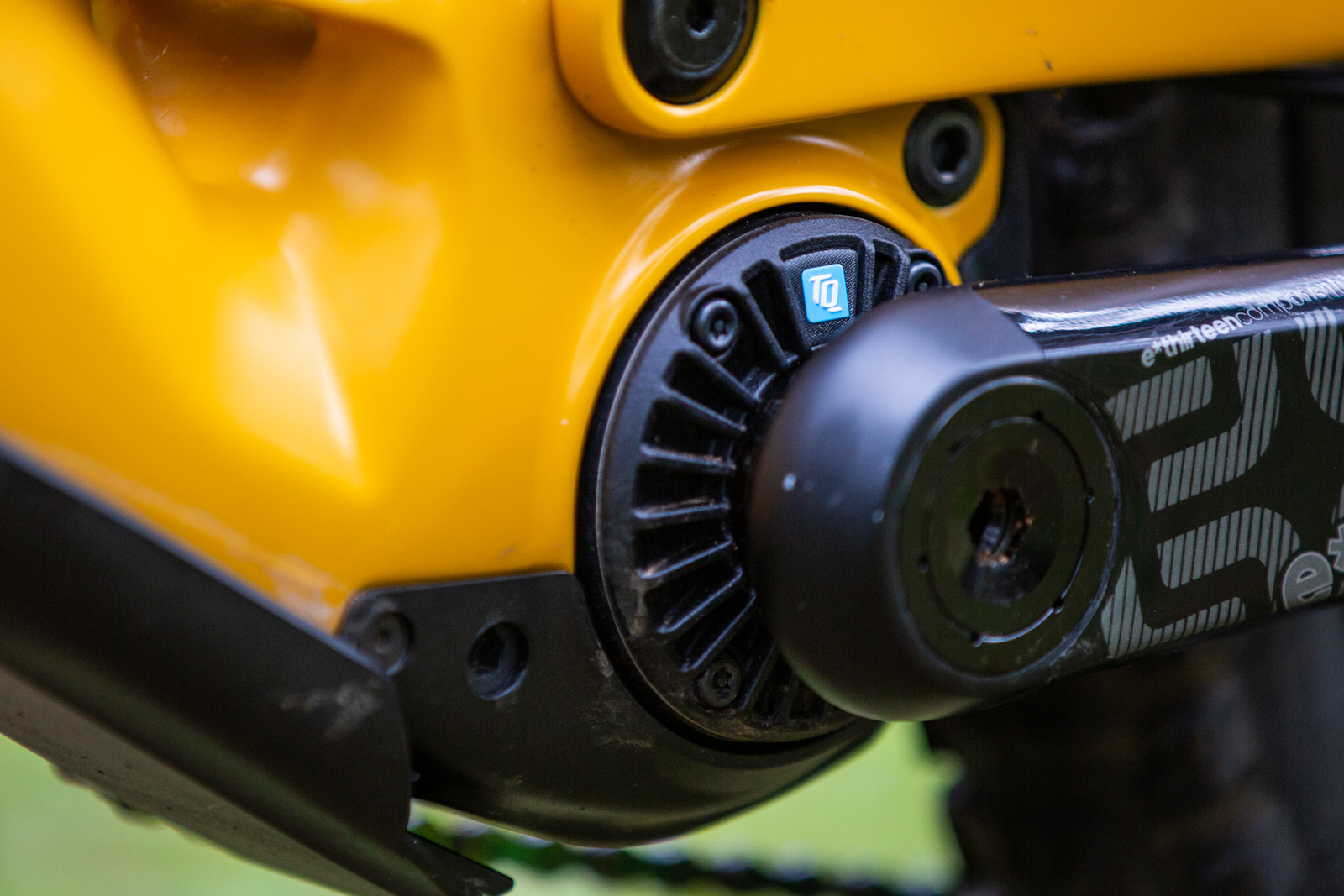
The plus side of this stiffness is how direct the bike feels, especially when forcing the point in a turn. It's one of the better bikes I have ridden in terms of immediate response to loading up the suspension to pop to another line or out of a corner. The frame is so stout, that it loses nothing in flex, meaning the suspension can work and you don't have any vague handling.
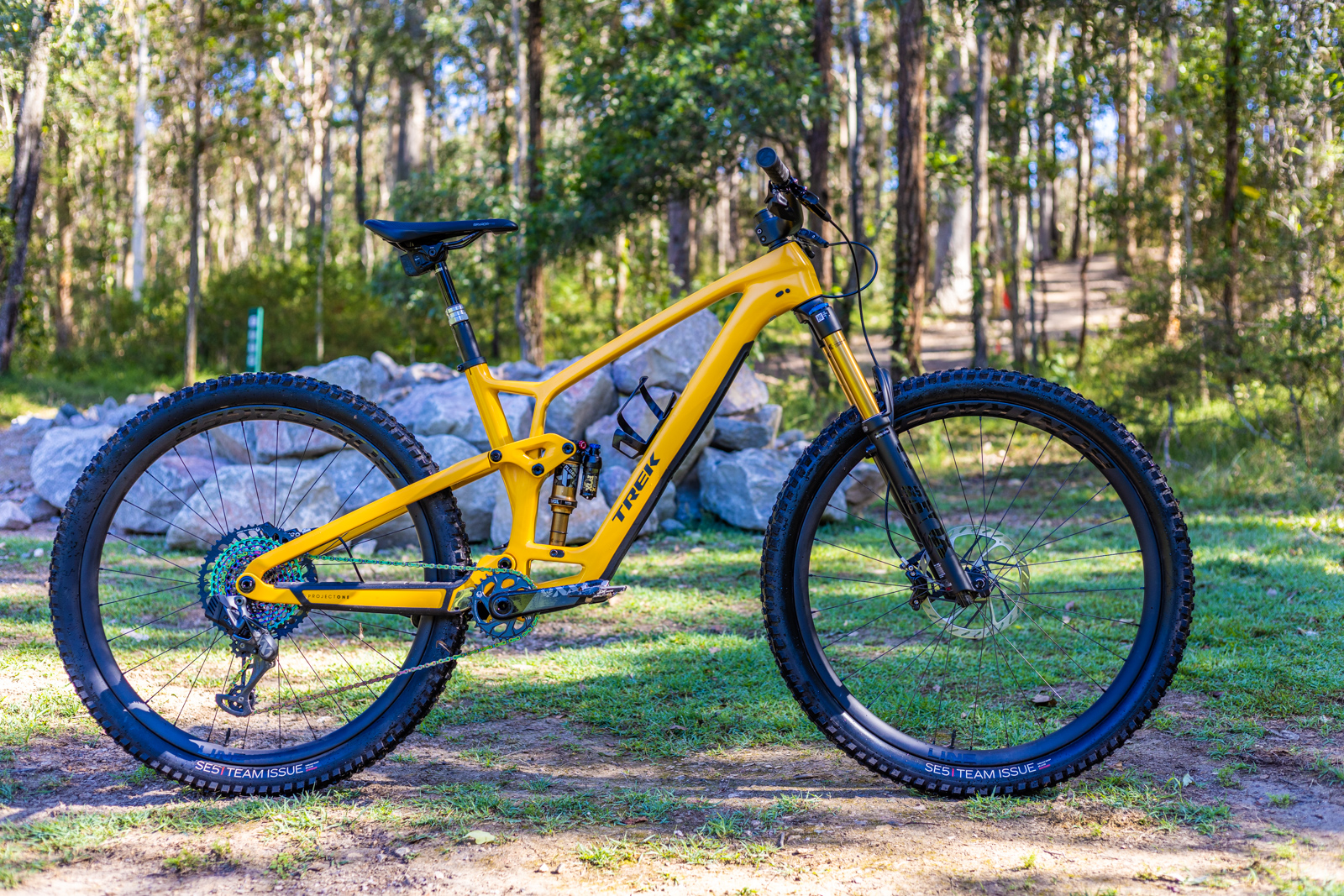
Trek's headset adjustment is achieved through aftermarket cups and none were available during testing, so I ran it in the neutral setting. I did change the rear shock position to the More setting later in the test period. This setting is more progressive and ideally suited to faster riding and for coil shocks. I don't go that fast, but I was keen to see how much it would impact the ride.
Interestingly enough, it was immediately noticeable even when working the bike through flowing sections on mellow trails. I didn't adjust any settings at first but did end up adding a tiny bit more rebound damping and reducing the pressure about 3psi. I'm not one to send it off all features, but I liked the change in how the Fuel EX responded, and was happy to have the initial stroke a little plusher and to let the bike ride high in the midstroke. The Fox Float X and these two settings will let you do a whole bunch of tuning to make the Fuel EX ride how you want it to, and that's before you even think about putting a coil shock in it, making it a mullet or running the fork at 160mm.
While I stuck in the low setting on the MinoLink, I can see that riders in rockier areas may err towards running the high setting. I was close to clipping pedals occasionally, but in general even on climbing singletrack on my relatively benign trails it was all good, with the added stability of the lower bottom bracket a big bonus, especially when letting the Fuel EX run wide open.
Our take
The Trek Fuel EX has been a highly popular bike in the Trek range for years, and the new iteration will solidify that. The only downside is that riders who loved the current Fuel EX may feel like they have been left behind. Our sport is advancing, and that means riders are pushing the limits of their equipment and the equipment needs to keep up. That is exactly what Trek have done with the Fuel EX, making sure it is a relevant trail bike for a huge range of mountain bikers. The very neutral pedalling means it will suit those tackling big days to ride committing descents. The option to tune the suspension or run a coil will be a perfect fit for those looking to focus on the descents and high speed jump trails, while the geometry tuning options means you'd be hard pressed to find a setting that didn't suit your trails. With so many sizes available, and a tick list of trail bike must haves all ticked off, Trek really have made a trail bike that could suit just about anyone.
If you need something to really pedal all day and dabble in some endurance events – look closely at the Top Fuel instead. If your focus will be between the tape in enduro demanding events, then you may be best served by the Slash. But if you love to ride and play around on bikes, then the new Fuel EX may just be the perfect bike for you. Ride it, jump it, rip it, race it. The Fuel EX comes alive with more speed and greater input, and as such is a bike that will beg to be ridden harder and faster. It really is a well-balanced trail bike that suits so much of the riding we have in Australia and New Zealand, and kudos to Trek for matching the features across alloy and carbon models.
SPECIFICATIONS
Brand: Trek
Model: Fuel EX 9.9 AXS
RRP: $5199-$9199
Weight: 14.45kg
From: trekbikes.com/au/en_AU/
Available Sizes: XS, S, M, M/L, L, XL, XXL
Frame: Material OCLV carbon fiber
Fork Fox Factory 36 GRIP2 150mm, 44mm offset
Shock: Fox Factory Float X (140mm)
Shifter: SRAM Eagle XX1 AXS, 12sp
Derailleur: SRAM Eagle XX1 AXS, 12sp
Crank: SRAM Eagle XX1 AXS, DUB, 170mm, 32t
Bottom Bracket: SRAM DUB BSA threaded
Chain: SRAM Eagle XX1 AXS, 12sp
Cassette: SRAM XG-1299, 10-52, 12sp
Wheel set: Bontrager Line Pro 30
Tyres: Bontrager SE5 Team Issue, 29×2.5”
Brakes: SRAM Code RSC, 200/180mm
Cockpit: Bontrager RSL Enduro, 820x45mm and 27.5mm rise
Seatpost: RockShox Reverb AXS 34.9mm, 170mm
Saddle: Bontrager Arvada, 138mm

